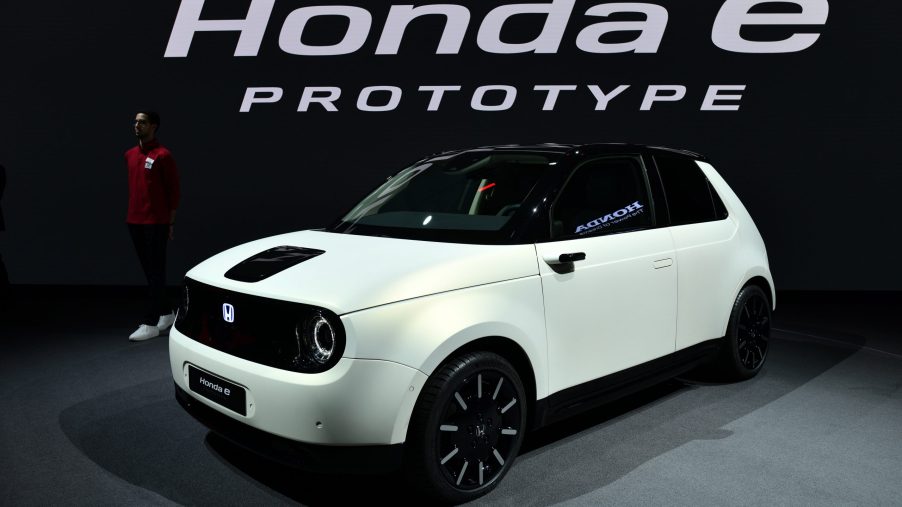
The Honda e Is Putting All Its Eggs in 1 Basket
Honda isn’t a stranger to electric motors. The Honda Insight was the first widely-available hybrid vehicle in North America, even beating out the famous Prius by almost a year. But as it put hybrid engines in its Civics and Accords (to much acclaim, most years), Honda has so far shied away from manufacturing a full-on electric vehicle.
That all changes this year with the introduction of the Honda e. Attempting to fill a niche in the city-driving market, Honda has seemingly put all its eggs in one (small, cute) basket.
What the Honda e does (and doesn’t do)
If you’re not worried about range, the Honda e seems incredible. It’s a quality vehicle at an affordable price, according to a CNET review. However, the review also covers some very specific things buyers should be aware of.
For example, what about the side mirrors? Are they big, are they small, do they jut out at a strange angle? Well, Honda has decided to remove them and replace them with cameras that cover a similar angle (with more flexibility). This is likely a move toward a new industry standard.
But the mirrors are just a neat little side note, as are the improved turning radius on the tires and the very serviceable acceleration. But there’s one very, very important aspect of the vehicle to consider. As much as the Honda e seems like it might be a great car to take a road trip in, the range tops out in the low 100s.
Different versions have ranges like 136 miles or 127 — either way you’re not driving for more than two hours on the freeway. It’s a significantly lower number than many hybrids of the past and clearly can’t compete on that axis.
Where the range works
But this version of the Honda e isn’t for cross-country trekkers. It’s built to get you from point A to point B without using any gas. And as long as point A and point B aren’t more than a hundred miles apart, you’ll be able to do it with ease, in a car that feels great.
Whether this strategy is going to work is up in the air. The Tesla Model S has a range of nearly 350 miles (560 km) and even the recent versions of the tiny Nissan LEAF approach 250 miles (402 km) on a charge. Consumers are expecting much longer ranges than the Honda e plans on delivering, and it could be a shock when they find out the real numbers.
Honda plans to aggressively market the Honda e as a city-only car. A daily driver for folks who don’t have to leave the city. Although plenty of people aren’t going to work right now, the Honda e may hit the market right as consumers are facing a daily commute again — with a tight budget.
Even at the most generous estimate, 136-mile range is a hurdle to clear. Honda will have to fight against preconceptions and connect with consumers that will enjoy the car for what it does right.
The bottom line on the Honda e
For many potential customers, the minimal range of the Honda e will make it a non-starter. If you work more than 50 miles from home and don’t have a charging station there, it doesn’t make sense to roll the dice every day on whether you’ll be able to get home or not.
But in stop-and-go traffic, Honda might have a winner. Potential buyers will need to weigh the dozens of exciting attributes against the minimal range, but if there’s enough demand then Honda might have succeeded putting all their eggs in one basket.


